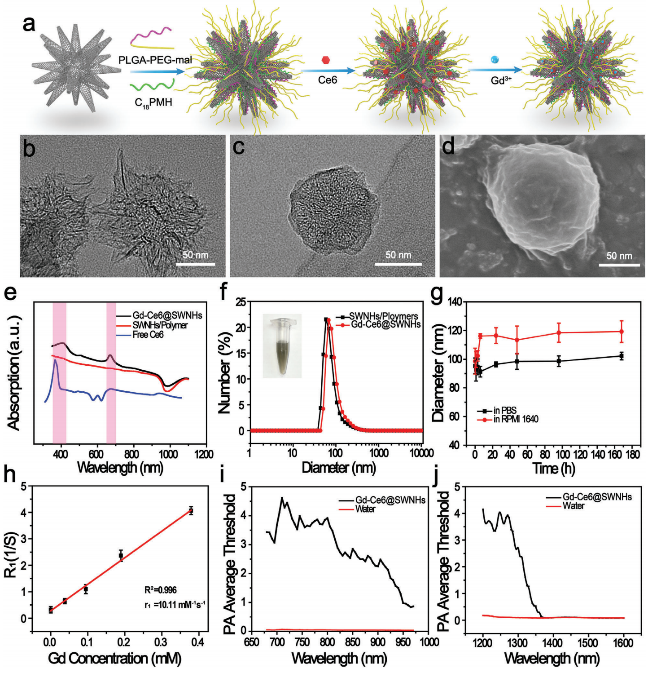


Bio-detection and theranostics based on multifunctional nanomaterials
For bio-detection (e.g. coronavirus) and cancer treatment, we have been focused on the development of ultrasensitive and multiplexed bio-detection based theranostic system and cancer immunotherapy. Multifunctional nanomaterials have been developed, which include, for example, a barcode library with ultrahigh encoding capacity based on novel encoding strategy and “immune-guide” nanomaterials, which have been applied to early diagnoses of diseases such as infectious diseases, cancer and Alzheimer’s disease, and immunotherapy of tumor. Among them, the encoded microbeads and ultrasensitive bio-detection technique for high-throughput suspension chips and early screening and diagnosis of cancer have undergone extensive clinical trials and potential commercialisation.

Dual modal carbon nanohorns promoted immune responses
Selected Publications:
1. Guo Q, Wang Y, Chen C, et al. Multiplexed luminescence oxygen channeling immunoassay based on dual‐functional barcodes with a host–guest structure: a facile and robust suspension array platform. Small, 2020, 16(17): 1907521.
2. Zhang D, Jiang Y, Yang H, et al. Dual-encoded microbeads through a host-guest structure: enormous, flexible and accurate barcodes for multiplexed assays. Advanced Functional Materials, 2016, 26(34): 6146-6157
3. Wang Y, Chen C, He J, et al. Precisely encoded barcodes through the structure‐fluorescence combinational strategy: a flexible, robust, and versatile multiplexed biodetection platform with ultrahigh encoding capacities. Small, 2021, 17(19): 2100315.
4. Sun W, Yang J, Hou M, et al. A nano “immune‐guide” recruiting lymphocytes and modulating the ratio of macrophages from different origins to enhance cancer immunotherapy. Advanced Functional Materials, 2021, 31(23): 2009116.
5. Yang J, Hou M, Sun W, et al. Sequential PDT and PTT using dual‐modal single‐walled carbon nanohorns synergistically promote systemic immune responses against tumor metastasis and relapse. Advanced Science, 2021, 7(16): 2001088.